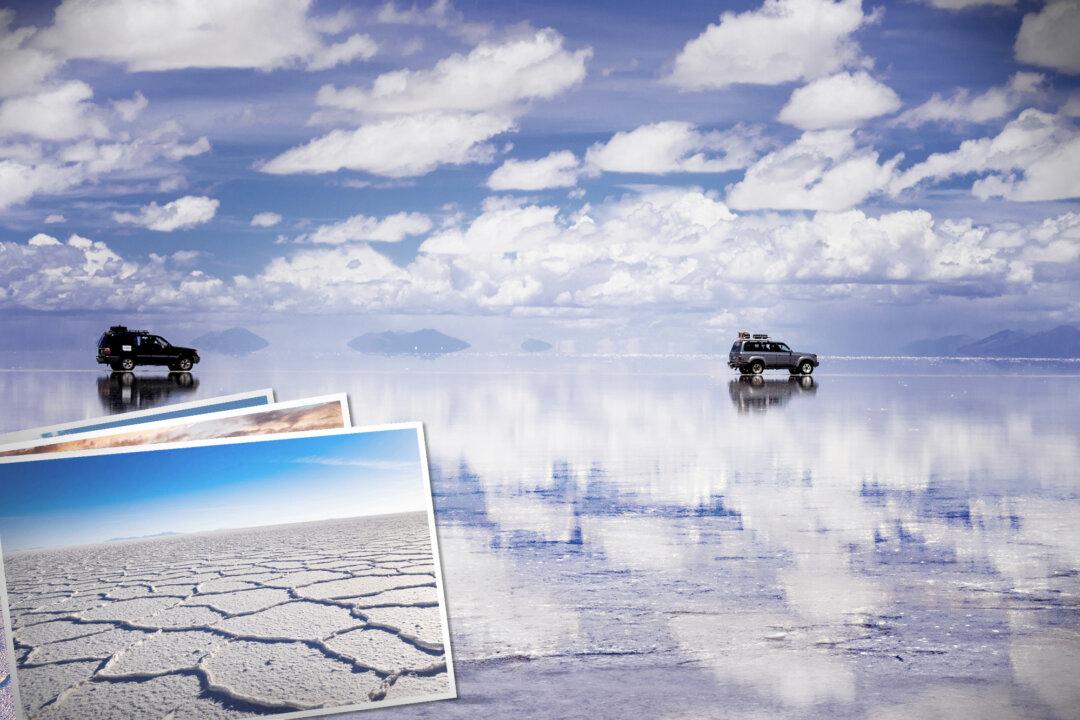Stepping onto the world’s largest salt flat is just like standing on a giant mirror. On a still day in Bolivia’s rainy season, a thin layer of water covering the plateau flats of Salar de Uyuni transforms it into a vast reflection of the sky. When this happens, it can be almost impossible to distinguish where the land ends and the sky begins.
One of the most otherworldly places on Earth, Salar de Uyuni covers a seemingly endless salt plain which only serves to emphasize the dazzling optical illusion. Stretching across 4,050 square miles of the Altiplano region, in the country’s southwest, it sits 4,000 yards above sea level, near the crest of the Andes mountain range. The salt flat is so big that 150 different countries could fit inside it, including Jamaica, Qatar, and the Bahamas.






